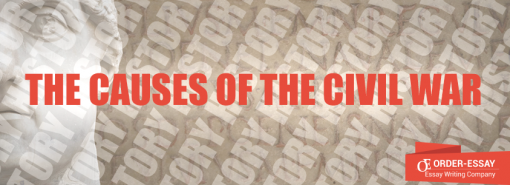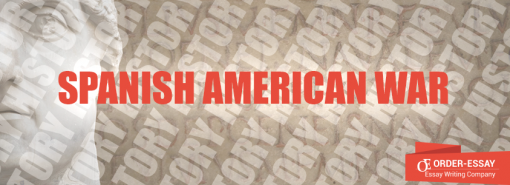
Targeting an extensive audience, Mehran Kamrava writes about the events starting from the collapse of the Ottoman Empire to the present day, considering central concerns like the dynamic forces of economic growth, dictatorial survival, and the Israel-Palestinian war. He incorporates events and matters of the past few years (Kamrava, 2011). This essay explains both Israeli and Palestinian views on the Middle East conflict and Jewish settlements. Moreover, it identifies who controls which part of the occupied lands in West Bank, Gaza, Golan, and East Jerusalem. It further discusses the aftermath of the conflict, recommendations to stop the wars among other events.
The war between Palestine and Israel forms one of the most vastly broadcast and nasty struggles of the contemporary times. It represents a risky flashpoint on a verge of setting the Middle East ablaze and attracting the United States into the fire (Bunton, 2013).The conflict is a present spectacle, dating back to the end of the nineteenth century despite the two groups having different religions. The Palestine and Israel conflict started as a scuffle over land that led to its fragmentation into three parts consisting of the State of Israel, the West Bank of the Jordan River and the Gaza Strip. The conflicting claims to the region challenges ceasefire in case one group applies exclusive political control over all of the land. According to the Middle East Report (n.d), Israel uses the Jewish claims to this land on the basis of biblical promise made to Abraham and his descendants. On the other hand, the Palestinian Arabs make claims to the land based on their constant habitation in the realm for centuries and the fact that they embodied the demographic mainstream until the reformation of Israel in 1948.
After 1949, even though there was a ceasefire between Israel and the Arab federations, the conflict persisted, and the whole region remained endangered by the prospect of another battle. Israeli forces seized Gaza and the Sinai Peninsula, although were forced to withdraw to the ceasefire lines due to the international pressure. The seizure was steered by the United States and the Soviet Union in an unusual demonstration of collaboration to prevent further conflict in the Middle East countries. As the military and political calamity continued, Israel proactively invaded Egypt and Syria, devastating their military personnel on the ground as Jordan hinged in the war late and subsequently was invaded by Israel too. As a result, the Egyptian, Syrian and Jordanian militias were authoritatively overpowered, and Israel seized the territories. These included the West Bank from Jordan, the Gaza Strip and the Egyptian Sinai Peninsula, and the Golan Heights from Syria (Middle East Report, n.d.). In contrast, the Palestinian national movement arose as a key player after 1967 in the system of the political and soldierly groups that constituted the Palestine Liberation Organization (PLO). Israel declined to negotiate with the Palestine Liberation Organization claiming that it was nothing but an extremist group, and maintained on associating only with Jordan or other Arab nations. It denied the formation of a Palestinian state insisting that Palestinians united with the prevailing Arab nations. The stubbornness ended when Israeli representatives entered into secret negotiations with the Palestine Liberation Organization, which resulted in Oslo Declaration of Principles.
International view is almost common that a two-state resolution, together with self-governing despite the lack of a visible movement toward achieving this result. One motivation is the seismic rightward shift in Israeli Jewish view considering that no peace is achievable with the Palestinians (Ellis, 2011). Another motivation is the division between Abbas and Hamas in the Palestinian body politics, as their disagreement over scheme of the negotiations versus resistance divides the common Palestinians as well. In the meantime, Palestinian people of Israel and immigrants bordering Arab nations remain adamant to their involvement in an inclusive peace. Many increasingly demanding questions arise concerning the feasibility of the two-state visualization and even the effectiveness of international law in providing a slightly just solution to the problem of Palestine. Third issue is the lack of political determination in Washington, in which the Obama administration preserves tenure of the peace process. The United States regularly united with the Middle East in a struggle to instigate Israeli-Palestinian talks targeting a two-state peaceful resolution. The US achieved the goal and upholds a courageous expression in public declarations regarding the possibility of success. There is no sign, however, that a peace agreement will be signed in the near future (Pappé, 2005).
In line with Middle East Report (n.d), the British divided this latter region into two parts in the year of 1921 forming the East and West of the Jordan River. Hence, it was the first time in modern history that Palestine became a united political body. All over the region, Arabs were infuriated by Britain’s disappointment in accomplishing its promise to form an autonomous Arab state. As a result, several people turned against the British and French rule as a defiance of Arabs’ right to self-determination. On the other hand, the Palestine experienced the situation a little more byzantine as a result of the British’s assurance to support the formation of a Jewish national home (Middle East Report, n.d.). The escalation of opposition by Palestinian peasants was motivated by the rising tide of European Jewish settlement, land buying and settlement in Palestine.
During the prolonged interim era of the Oslo process, Israel’s Labor and Likud states vividly increased settlement and land seizures in the occupied territories. In addition, they formed a network of bypass roads to facilitate navigation of Israeli settlers from their settlements in Israel going through Palestinian-populated zones. The Palestinians well construed the settlement projects as description territory that Israel intended to occupy in the ultimate settlement. However, the Oslo agreements had no mechanism to prevent these unilateral resolutions or Israel’s defying of Palestinian human and civil rights in regions under its regime.



For several years, the Palestinians denied Resolution 242 since it failed to allow their right to national autonomy or their right to return to their motherland. The Middle East Report (n.d) states that Resolution 242 necessitates just settlement that appears like an understatement to the Palestinian national rights. By necessitating a credit to every country in the region, Resolution 242 occasioned unilateral Palestinian respect to Israel minus mutual respect to Palestinian national rights. Nevertheless, the West Bank and the Gaza Strip turned into separate political divisions due to the 1949 ceasefire that divided the new Jewish state of Israel from other states of Mandate Palestine. The West Bank constituting East Jerusalem was governed by Jordan, which seized the region and stretched nationality to Palestinians residing in the area. At the same time, the Gaza Strip governance fell under the Egyptian military management as the Israeli managed to seize and inhabit the areas.
In an effort to gain the leverage of control, Israel instituted a military administration to administer the Palestinian inhabitants of the seized West Bank and Gaza. Consequently, Palestinians lost a number of basic political rights and civil liberties to the ruling Israeli administration. They lost freedoms including freedom of expression, freedom of press and political association. Palestinian desire for political independence was outlawed as an intimidation to Israeli security, implying that even showing the Palestinian national flags was a serious and grave offense. Israeli dogmas and operations in the West Bank and Gaza have incorporated broad usage of cooperative punishments like curfews, house devastations and barricading of roads, schools, and public institutes. Many Palestinian political activists faced deportation to Jordan or Lebanon. Large parcels of acres of Palestinian land underwent confiscation and a number of trees have been uprooted during the period.
Get a Price Quote
In conclusion, the situation in the Modern Middle East aggravates, especially in terms of the Israel-Palestinian conflict. The remedy for ending the conflict between these countries would be appreciated if these nations’ political leaders stopped confronting each other vocally publicly and in the international congregational conferences. These voiced attacks have high chances of making the nation that affronts the other greater and may lead to increased animosity between these states. In addition, such animosity may trigger resultant military attacks that will show that the hate is gradually increasing between the countries. It challenges the political leaders to indulge in closed-door talks that will target refining the diplomatic relations between these two states to boost the chances of achieving peace amongst these nations. Moreover, “it is as if Palestinian Arabs and indeed the Arab world simply exists, living better or worse, almost without a history they can access and champion.”, “Jewish have a destiny already foretold in ancient times” (Ellis, 2011, p. 130). Alternatively, the Middle East Region can devise means of restoring peace between these nations through the creation of a Middle East Union. In this union, all the nations of the Middle East will present their demands to the union for necessary interventions. Specifically, the union procedures will assist the organization in this region to appreciate each other’s interests, therefore, resolving the entire problem of insecurity ravaging the Middle East presently and solving it totally.








